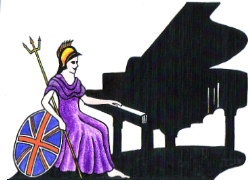Teachers, Accompanists and Piano Entertainers in the UK

UK Piano Page

High Street Llanerchymedd
Llanfairpwllgwyngyll, Anglesey LL65 3LS
Wales/Cymru
We are a retail Musical Instrument Company in
The Old Dairy
21 Dowland Road
Limavady, County Derry / Londonderry BT49 OHP
Northern Ireland
Limavady pianos service repair and restore pianos
1 Monmouth Court
Ringwood, Hampshire BH24 1HE
England
We are a leading UK piano shop established 1981 on
Unit 15, Witham Point
Wavell Drive
Lincoln, Lincolnshire LN3 4PL
England
We are dedicated piano specialists in Lincoln and
The Temple, Eastgate
Sleaford, Lincolnshire NG34 7DR
England
White & Sentance are one of the longest
Music Festival for performers and guests Our 10th
18-06-2022 01:30PM
The Morecambe Bay Piano Group was set up to extend
11-12-2021 02:00PM
The Morecambe Bay Piano Group was set up to extend
08-01-2022 02:00PM
The Morecambe Bay Piano Group was set up to extend
12-02-2022 02:00PM
What is the difference between Overdamping and Underdamping?
Take the same elastic band and place your finger near the centre to stop it from vibrating this is underdamping, which of course is more efficient. Overdamping is controlled by gravity where as underdamping is controlled by adjustable springs so on the whole underdamping is far more efficient than overdamping. However, there is one disadvantage with underdamping. That is, if the dampers are incorrectly aligned to the nodes and antinodes of the vibrating string this will result in, the dampers when they come in contact with the string, emphasising certain harmonics on the piano, thus giving you a harmonic ring, this is more common on small uprights and small grandís as the margin of tolerance decreases as the piano becomes smaller.